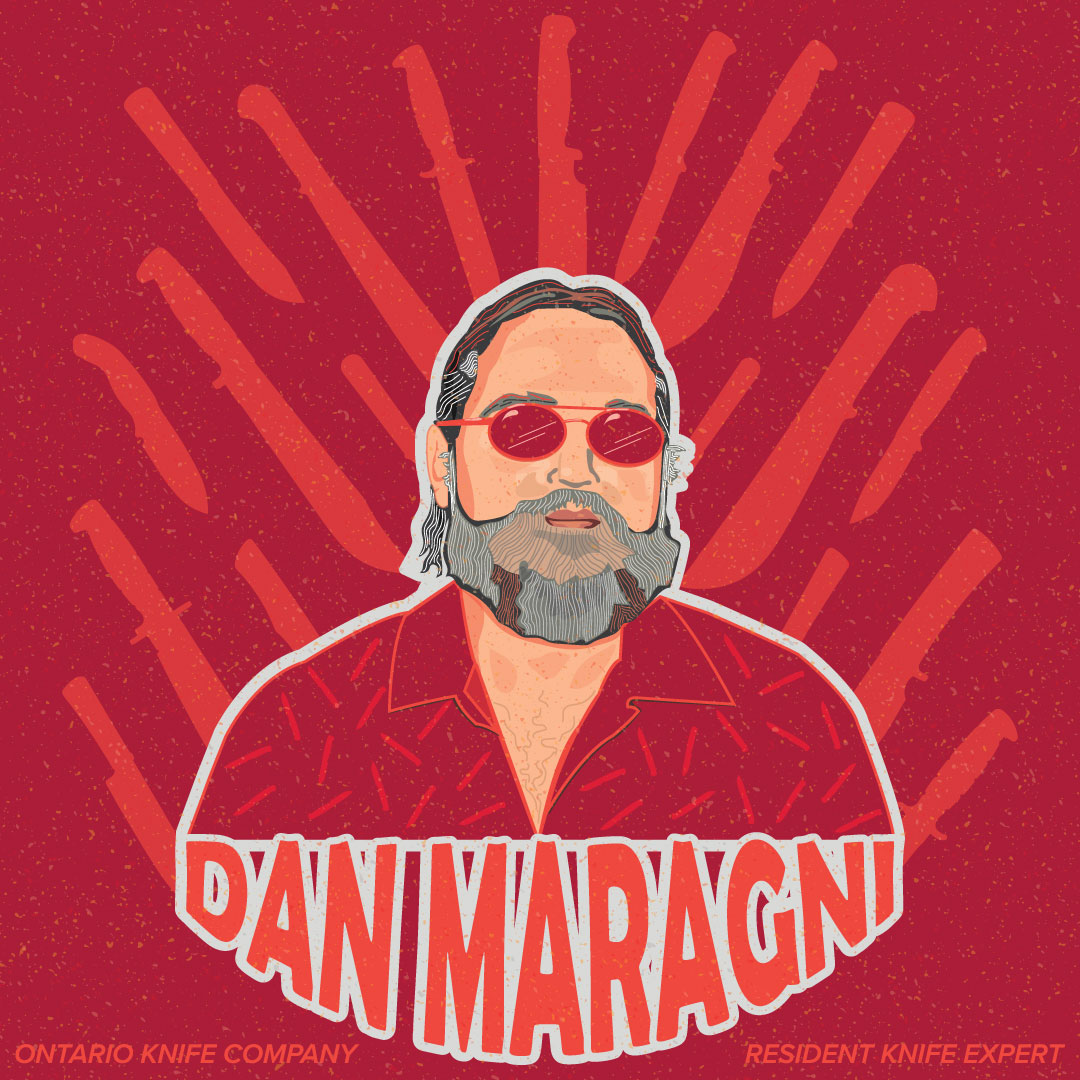Find more content and information about Ontario Knife Company by following our social media channels.
Rockwell Hardness: What Is It Good For?

Rockwell Hardness: What Is It Good For?
Rockwell Hardness: What Is It Good For?
BUT FIRST AN IMPORTANT RESOURCE ALERT
An invaluable resource for anyone interested in knives is Dr. Larrin Thomas’ website www.knifesteelnerds.com and his excellent book “Knife Engineering: Steel, Heat Treating, and Geometry.” I started investigating knife metallurgy and having blade samples examined by metallurgists in the 1980s and it was quite rare at the time. Over the years I managed to develop a pretty good understanding of practical knife blade metallurgy and used metallurgical examinations to solve many of the problems I encountered in both industrial knife making and in my shop. I also came to realize there was a big difference in “steel metallurgy” and “knife steel metallurgy” and spent many years trying to bridge the gap between the two. Blades face performance challenges that most tools do not so they require a targeted metallurgical study which Dr. Thomas provides.
The Test
The Rockwell C scale test is made by slowly elevating a specimen against a diamond ground to a 120 degree cone with a 0.2 mm spherical apex until a minor load has been applied. This minor load is approximately 22 lbs. and serves to position the indenter with respect to the face of the sample. A major load of 330 lbs is then applied and released and the depth of the indentation between the minor and major load is measured. This measurement is then translated to the C scale number. Obviously the softer the material the deeper the indentation and the harder the material the shallower the indentation.
What the Test Will Do
Once a heat treatment/microstructure has been determined a Rockwell hardness is taken and used as a indication of whether the heat treatment has been correct and consistent. It is a fast and easy test that can be done on the factory floor with a relatively inexpensive piece of equipment and is typically done to samples at every stage of the heat treatment and documented. Any change in the hardness readings once the procedure has been established will indicate a problem in the heat treating equipment or steel and will result in an investigation of the cause. So Rockwell hardness testing works very well as a quality monitor for heat treating.
What the Test Will Not Do
Steels are heat treated to a specific microstructure and the Rockwell C scale is only a gross indicator of the microstructure of the steel and cannot be considered a direct indicator of whether a knife will be tough or take and hold a keen edge. Blades of the same material and hardness can have very different performance characteristics depending on their condition prior to heat treating and the specific processes of hardening and tempering. Different steels require different austenitizing temperatures and soak times, different quench speeds and different tempering temperatures and times to produce the final optimized microstructure.
So it is not a case of higher Rockwell numbers being better than lower numbers because each steel has a fairly tight range of “hardnesses” (microstructures) that optimize the heat treated condition of the steel.
Some important performance factors that the Rockwell hardness test will not reveal is carbide amount, size and distribution, amount of retained austenite, it does not directly relate to material toughness or wear resistance but will usually correlate to yield strength. This can be important when predicting edge stability but is less of an indicator than blade/edge geometry, material and heat treatment.
Modern Heat Treating
In modern industrial heat treating knives are processed in either vacuum furnaces for stainless and high alloy steels or salt pots for carbon and low alloy steels. Both have precise digital controllers and are typically very accurate and consistent. So once a targeted microstructure is established and checked for the associated hardness it is fairly simple to maintain consistency in the heat treatment. A growing number of custom makers are now also using digitally controlled kilns and even agitated quench tanks to heat treat their blades so overall quality of blade heat treatment in both the commercial and custom fields have never been higher.
What Should You Do When Selecting A Knife?
I would suggest if you are interested in a particular knife identify the steel and check the steel data sheet or the above “Important Research Alert” for the recommended hardness (both available on the internet). This information will at least give you an indication of the quality of the heat treatment and the competency of the heat treater.
So what is the value of the Rockwell hardness number to the consumer?
It will indicate whether a blade has been grossly mis-heat treated but with modern steels and equipment this is unlikely.
So if the Rockwell hardness is not a good indicator of knife performance, what is?
Blade geometry! Which will be the subject of future essays on this website.

BY : Web Admin